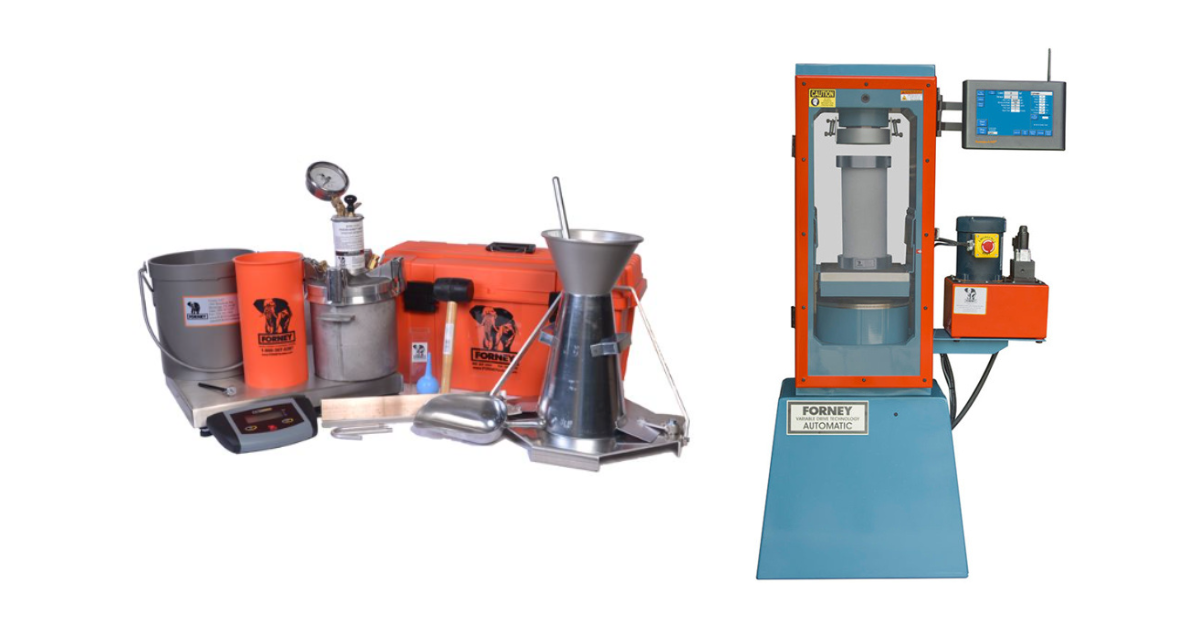For years, construction material testers have struggled to close the gap of manual workflows – but new solutions exist to finally close that gap. In the age of automation, what does the modern construction materials testing lab really need?
Automation has revolutionized construction materials testing. From mobile field applications and iPads to LIMS and accounting systems, almost every construction organization uses technology in some way shape or form. Other advancements that save the busy lab a lot of time include:
- Barcode scanners to replace manual specimen identification.
- Automatic machines to replace inconsistent testing.
- Integrated software solutions to replace clip boards and manual data transfer.
However, despite all this technology, there’s still a problem:
Which means manual errors still manage to find their way in.
In a world with so many tools at your disposal – tools that, when siloed, don’t achieve everything they promise – it’s time to optimize. What do you really need to be a modern, efficient CMT lab in 2023? We can bucket these construction materials testing solutions into three crucial categories.
3 Essential Construction Materials Testing Solutions for the Modern Lab
#1. Automatic Machines
By nature, manual testing workflows are slow, inconsistent, and susceptible to errors. Part of this is caused by manual machines, which are harder to use, more expensive to staff, and have shorter life spans than automatics.
Automatic machines have brought CMT labs into the future. In fact, new machine purchases are almost exclusively automatic – it’s just a matter of upgrading or replacing manual ones if you haven’t already.
Why?
Because automatic machines allow automated testing workflows, which immediately allow you to do these three things better:
- Eliminate errors and variability.
- Run more tests in less time (within the speed tolerance).
- Ensure peace of mind for your customer.
Whether you’re a third-party CMT lab testing specimens for clients every day, or a precaster quality checking your own product – there’s always a stakeholder to satisfy. An automatic machine simply makes your process and product better, giving you a competitive edge.
However, an automatic machine is only part of the equation. By itself – that is, siloed – all the potential benefits are at risk of bias or error down the line.
That’s why modern labs are taking automation a step further with machine-integrated testing software.
#2. Machine-Integrated Construction Materials Testing Software
Machine-integrated CMT software is more than an integration that transfers results from the machine to software. The nature of the integration really refers to a two-way integration, before and after the test occurs.
This type of platform connects the entire construction testing workflow, leaving no gaps or room for human intervention from the moment field data is captured in the system, to specimen curing and identification, to validation and testing, to sign off and next steps.
Most importantly, machine-integrated CMT software preloads specimen data collected at the field into the testing machine, so the machine can validate the test based on the sample date, size, type, expected strength, and other important test parameters. This ensures that the right specimen is tested on the right date, and is associated with the right project.
After the automatic test, results appear exactly where you need them. You can see this specific process in the video below.
ForneyVault | Integrated Machine Explainer from ForneyVault on Vimeo.
Ultimately, machine-integrated CMT software sits at the center of your workflow, creating an unbreakable link between field tests, lab testing machines and back-office systems. The result: unalterable test results that everyone can trust.
#3. CMT Equipment
Finally, we would be remiss not to mention all the field and lab equipment that keeps your lab running. Every part of the construction materials testing workflow matters, even the materials science equipment, accessories, and specialty tools you need to get ready for the test in the lab.
To name just a few:
- Slump cones
- Air meters
- Digital scales
- Thermometers
- Cylinder molds
- Strike off bars
- Pad caps
Let’s look at an example: concrete capping, a vital part of strength testing.
When preparing a cylindrical concrete specimen, you need smooth and even surfaces on each end of the cylinder. The end inside the concrete mold is usually almost perfect, but the top is open, which means it’s not perfectly molded to the container.
Why does this matter? Well, if the cylinder ends are not perfectly uniform and parallel to each other, the measured strength will be artificially diminished due to stress within the cylinder. This skews test data and can cause delays and other problems down the line. Labs use pad caps or capping compound to compensate for the imperfection and ensure tests results are accurate.
With a good solution for regularly stocking up on critical CMT supplies like pad caps and concrete molds, your lab will have everything it needs to test more effectively and reliably. (Making the most out of the technologies you’ve invested in for other steps of the CMT workflow.)
Conclusion
In 2023, it can be easy to get lost in all the technology options available to your construction materials testing lab. But the truth is you only really need three solutions: an automatic machine, machine-integrated CMT software, and – don’t neglect this – high-quality field and lab supplies.
From powerful machines to specialty equipment to software that brings everything together, Forney’s construction materials testing solutions have been trusted by thousands of construction companies and labs for over a hundred years. Tell us about your testing needs.
